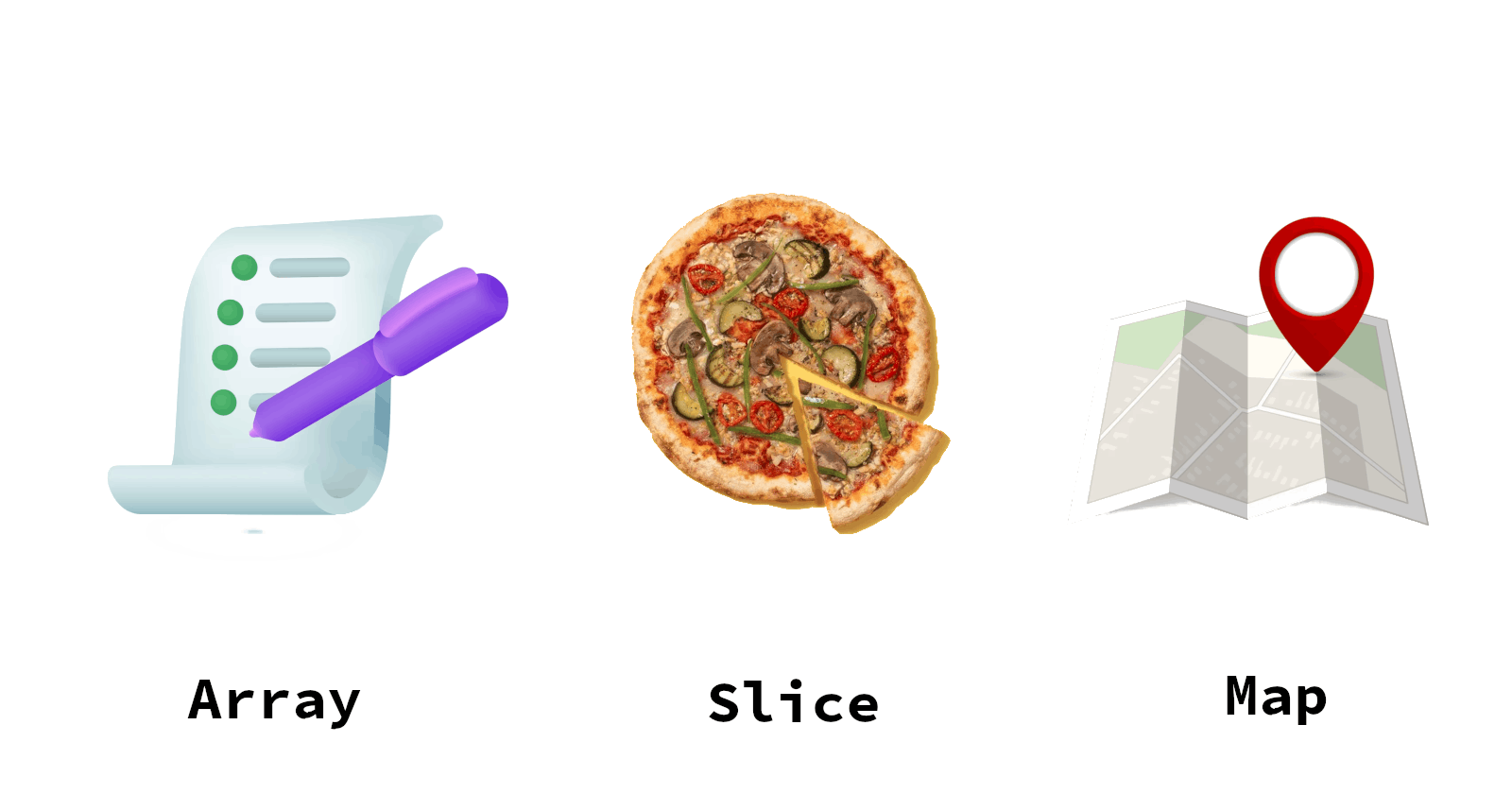Go's Data Containers: Arrays, Slices, and Maps
A Brief Guide to Harnessing the Power of Data Structures in Go
Table of contents
Introduction
Welcome to the heart of Go's data-handling capabilities! In this guide, we will explore arrays, slices, and maps, three versatile data structures that form the backbone of Go programming. Understanding these structures is vital for crafting efficient and organized Go applications. Whether you're an experienced Python developer or new to programming, Go's elegance and flexibility will leave you captivated.
Simpler Explanation
Think of arrays like a collection of numbered boxes where you can put things. Slices are like dynamic lists that can grow or shrink, and maps are like dictionaries that help you find things quickly.
Sample Code
Arrays in Go:
package main
import "fmt"
func main() {
// Declare an array with fixed size
var fruits [3]string
fruits[0] = "Apple"
fruits[1] = "Banana"
fruits[2] = "Cherry"
// Iterate through the array
for i := 0; i < len(fruits); i++ {
fmt.Println(fruits[i])
}
}
Slices in Action:
package main
import "fmt"
func main() {
// Create a slice
numbers := []int{1, 2, 3, 4, 5}
// Append elements to the slice
numbers = append(numbers, 6, 7)
// Iterate through the slice
for _, number := range numbers {
fmt.Println(number)
}
}
Mapping with Maps:
package main
import "fmt"
func main() {
// Create a map
ages := map[string]int{
"Alice": 25,
"Bob": 30,
"Eve": 22,
}
// Access values from the map
aliceAge := ages["Alice"]
// Print Alice's age
fmt.Printf("Alice's age: %d\n", aliceAge)
}
We demonstrate how to declare and iterate through arrays.
In the slice example, we create a dynamic list, append elements, and use a range-based loop.
In the map example, we create a dictionary-like structure and access values by keys.
Conclusion
You've just ventured into the world of Go's data containers: arrays, slices, and maps. These data structures are fundamental in organizing and managing information in your Go programs. Armed with this knowledge, you're well-prepared to tackle a wide range of programming tasks and create organized and efficient Go code. Continue to experiment and build to master these data structures like a true Gopher!

